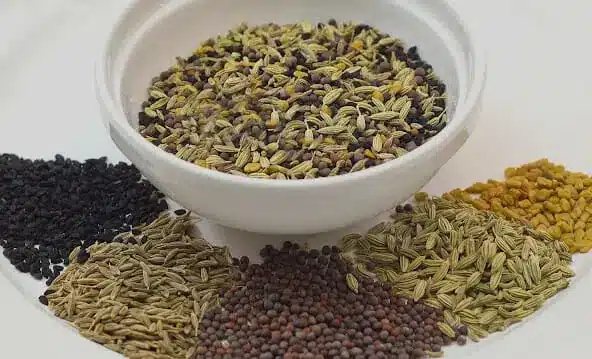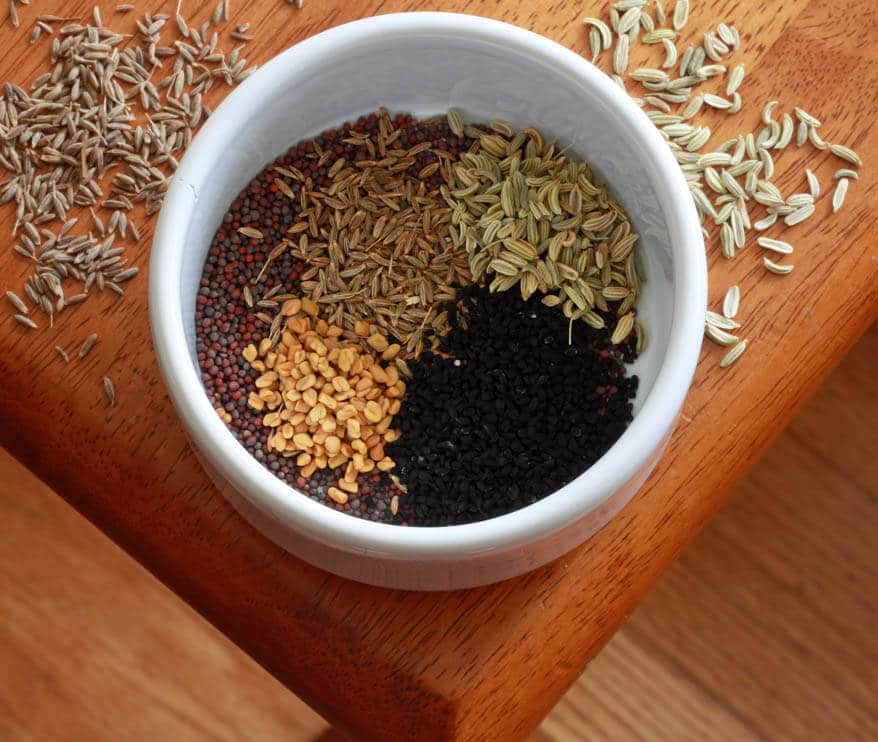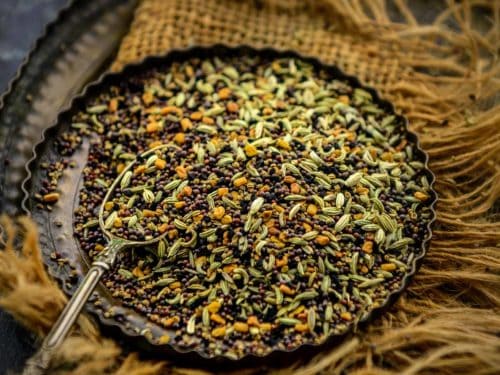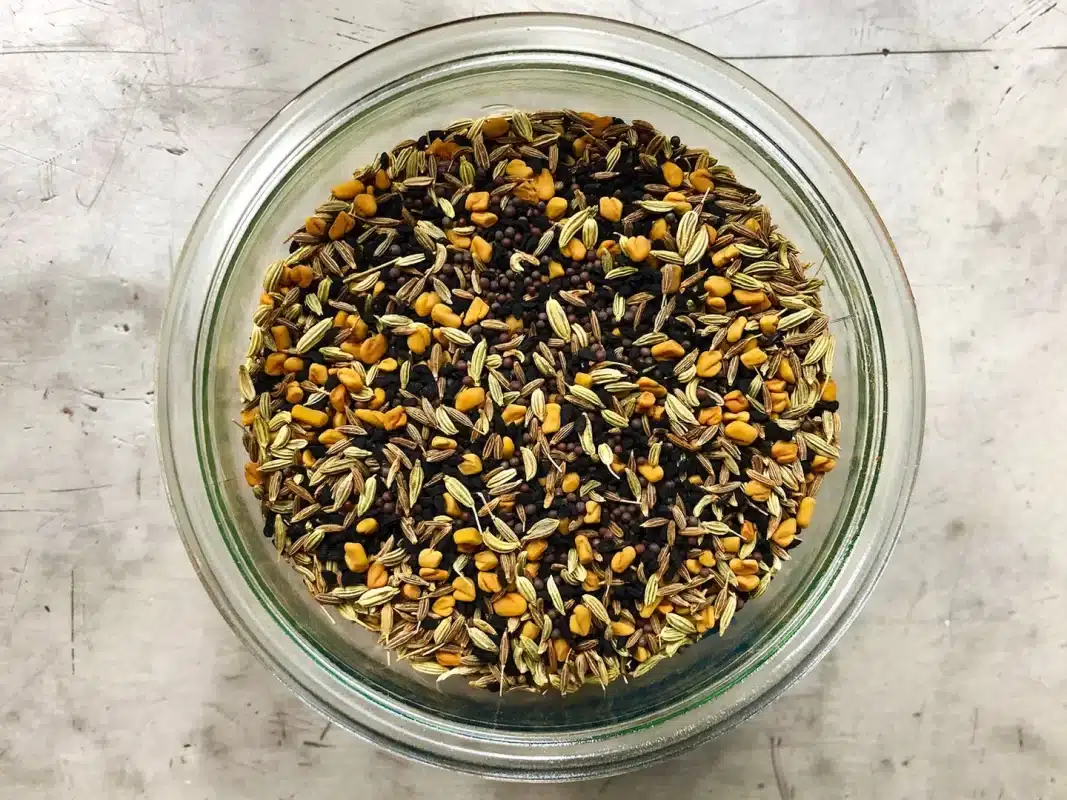Blog
Panch phoron and its traditional uses?

Panch Phoron, a quintessential spice blend originating from the Indian subcontinent, embodies the rich culinary heritage and vibrant flavors of the region. Comprising five distinct spices, each with its unique aroma and taste, Panch Phoron has been a staple in traditional Indian cooking for centuries. In this exploration, we delve into the origins, composition, and traditional uses of Panch Phoron, shedding light on its role in shaping the culinary landscape of South Asia.
Origins of Panch Phoron: Tracing a Flavorful Legacy
The roots of Panch Phoron can be traced back to the Bengal region of eastern India and Bangladesh, where it has been an integral part of the local cuisine for generations. The name “Panch Phoron” translates to “five spices” in Bengali, aptly describing the blend’s composition. While its exact origins remain shrouded in history, Panch Phoron’s enduring popularity speaks to its timeless appeal and widespread usage across South Asia.
Composition of Panch Phoron: The Fab Five Spices
Panch Phoron consists of five whole spices, each contributing its distinct flavor and aroma to the blend. The traditional combination includes equal parts of fenugreek seeds, nigella seeds, cumin seeds, black mustard seeds, and fennel seeds. This harmonious blend creates a symphony of flavors, balancing earthy, pungent, and aromatic notes that complement a variety of dishes.
Traditional Uses of Panch Phoron: A Culinary Symphony
Panch Phoron serves as both a flavor enhancer and a tempering agent in traditional Indian cooking. It is often used whole and added to hot oil or ghee at the beginning of the cooking process to release its aromatic oils and infuse dishes with its distinctive flavor profile. Panch Phoron is a key ingredient in numerous Bengali and Eastern Indian recipes, including vegetable dishes, lentil soups, fish curries, and meat stews.
Vegetarian Delights: Panch Phoron in Vegetable Preparations
In vegetarian cuisine, Panch Phoron adds depth and complexity to a variety of dishes. It is commonly used to flavor stir-fried vegetables, lentil-based curries, and hearty stews. The aromatic blend elevates simple vegetable preparations, transforming them into flavorful and satisfying meals. From potato and cauliflower curries to spinach and lentil soups, Panch Phoron infuses vegetarian dishes with its unmistakable essence.
Seafood Specialties: Panch Phoron in Fish Curries and Stews
In coastal regions where seafood reigns supreme, Panch Phoron is a beloved seasoning in fish curries and stews. The blend’s robust flavor complements the delicate taste of fish, enhancing the overall richness and depth of the dish. From tangy mustard-based fish curries to aromatic coconut milk stews, Panch Phoron adds a distinctively Indian flair to seafood preparations, captivating the taste buds with its harmonious blend of spices.
Meat Marvels: Panch Phoron in Meaty Creations
Panch Phoron lends its aromatic touch to meaty creations, infusing dishes with layers of flavor and complexity. Whether used in lamb curries, chicken stews, or beef kebabs, the spice blend imparts a warm and inviting aroma that tantalizes the senses. Panch Phoron’s balanced combination of spices enhances the natural richness of meat, creating hearty and satisfying meals that are synonymous with comfort and indulgence.
Tempting Tempering: Panch Phoron in Tadka and Chaunk
One of the most iconic uses of Panch Phoron is in the technique known as tadka or chaunk, where whole spices are tempered in hot oil or ghee and then poured over cooked dishes as a finishing touch. This method releases the spices’ essential oils, intensifying their flavors and imparting a distinctive smoky aroma to the dish. Panch Phoron tadka is commonly used to flavor dals, vegetable dishes, and rice preparations, adding depth and complexity to the final presentation.
Beyond Borders: Panch Phoron’s Global Influence
In recent years, Panch Phoron has gained recognition beyond South Asia, captivating the palates of chefs and food enthusiasts around the world. Its unique flavor profile and versatile usage have made it a sought-after ingredient in international cuisines, inspiring creative adaptations and culinary innovations. From fusion dishes to modern interpretations, Panch Phoron continues to leave its mark on the global culinary stage, showcasing the enduring legacy of traditional Indian spices.
Culinary Creativity: Experimenting with Panch Phoron
While Panch Phoron is traditionally used in savory dishes, culinary enthusiasts are increasingly exploring its potential in other culinary applications. From infused oils and marinades to bread and pastry doughs, Panch Phoron adds a distinctive twist to a variety of recipes, inviting experimentation and culinary creativity. Its aromatic blend of spices opens up a world of possibilities, allowing chefs and home cooks to embark on a flavorful journey of exploration and discovery.
Preserving Tradition: Honoring the Legacy of Panch Phoron
In a rapidly changing culinary landscape, Panch Phoron serves as a reminder of the rich cultural heritage and culinary traditions that define South Asian cuisine. As chefs and home cooks continue to embrace global flavors and culinary trends, the timeless appeal of Panch Phoron endures, weaving a thread of tradition and authenticity into every dish it touches. From humble home kitchens to Michelin-starred restaurants, Panch Phoron remains a symbol of culinary excellence and cultural pride, cherished by generations past and present.
FAQ:





